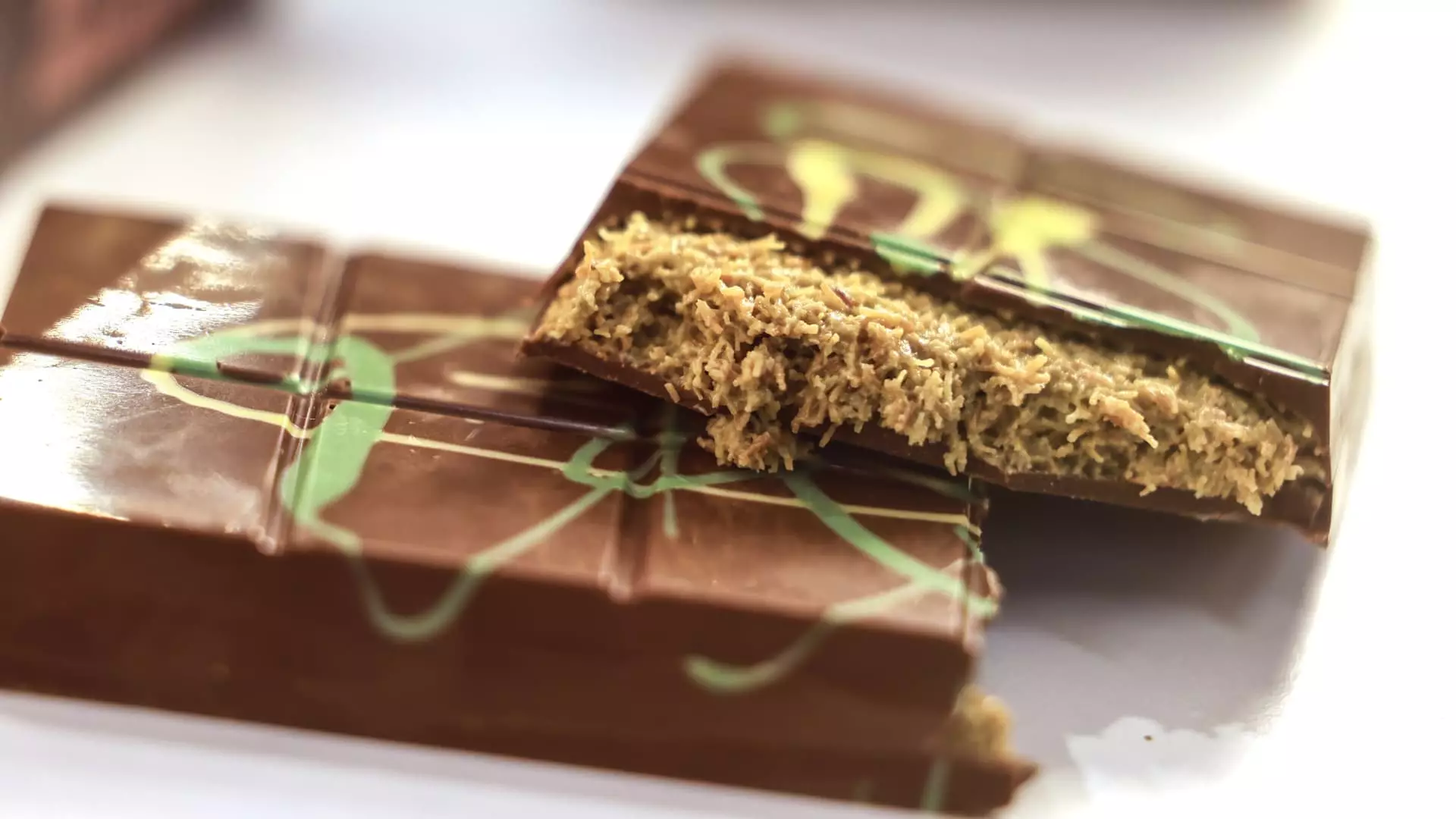In the ever-evolving landscape of the culinary world, trends rise and fall with the consistency of the tides. The latest phenomenon making waves is none other than the “Dubai chocolate,” a unique fusion of ingredients that originated from a personal craving. Sarah Hamouda, the visionary behind Fix Dessert Chocolatier, transformed her pregnancy cravings into a sensational chocolate bar, challenging the norm of sweet treats. This bar transcends simplistic definitions—it’s a dessert cleverly encased in chocolate, featuring a delicious blend of pistachio cream, kadayif, and tahini. While cravings may often lead to whimsical ideas that fade quickly, Hamouda’s ambition to marry rich flavors with a classic treat has proven to be a groundbreaking success in the culinary sphere.
From Local Delight to Global Buzz
The viral nature of social media has propelled the Dubai chocolate bars into a full-blown market phenomenon. With the convenience of digital platforms, Hamouda’s creation quickly shifted from a few weekly orders to an overwhelming surge of 10 to 15 orders per day. It’s a testament to how a simple idea can morph into something profound when it strikes the right chord with consumers. Yet, as the bars flew off the shelves, the logistical challenges began to mount. Stability in production became a pressing issue; companies vying for market share often struggle to maintain quality and authenticity amid skyrocketing demand. This tension, as thrilling as it is chaotic, showcases the high stakes of entering the trend economy.
Imitation: The Sorrowful Standard of Success
However, the booming popularity of Dubai chocolate has opened the floodgates for imitation. The lack of international trademark protection in the UAE allows any company to replicate Hamouda’s creation without repercussions, siphoning profits from the innovators themselves. This dilemma exemplifies a growing concern that many passionate entrepreneurs face—how can one safeguard originality in a market driven by relentless competition? For iconic brands like Lindt, the answer lies in adaptation and innovation as they scramble to respond to this trend. Yet, imitation can cast a long shadow over genuine creativity, lessening its impact and diluting the significance of the original.
Corporate Giants Join the Fray
As demand soared, companies such as Shake Shack, Crumbl, and Starbucks rushed to capitalize on this trend, each with their spin on the Dubai chocolate. Shake Shack’s limited-edition milkshake and Crumbl’s brownie variations reflect the broader appetite for unique flavors that echo Hamouda’s original concept. Meanwhile, Starbucks opted for indirect involvement, promoting a customer’s suggestion instead of creating a formal product. Here, one can’t help but observe how large organizations often tread carefully, balancing the need to innovate while ensuring they maintain their brand integrity. The accessibility to diverse flavor experiences is tantalizing, but it raises the question: Does stepping on the coattails of a humble startup dilute the authenticity of such a novel idea?
The Grassroots Revolution: Local Businesses Thrive
Interestingly, some local entrepreneurs have embraced the challenge with gusto. Nuts Factory in New York City claims to be the first to replicate the Dubai chocolate bar, making magic happen through on-the-fly adaptations. Their rapid turnaround from a modest production scale to thousands of bars a day shines a light on how smaller, agile businesses can thrive amid enormous demand. The story of Nuts Factory encapsulates the grit necessary to succeed in today’s food industry—far removed from the polished narrative of well-established corporations. Their success not only showcases the resilience of local entrepreneurs but also raises essential questions about the sustainability of trends built on strip-mining creativity.
Enduring Impact of a Trend
As the novelty of Dubai chocolate continues to permeate menus both at home and abroad, food service analysts report a significant increase in chocolate-pistachio combinations—highlighting how this trend has influenced broader gastronomic tastes. While recognizing that trends can be fleeting, there’s something inherently profound about a dish that captures the imagination of consumers and reinvents the norms of chocolate consumption. In an age where culinary experimentation is rising, the Dubai chocolate experience embodies both risk and reward, inviting both brands and consumers into a delicious new era of indulgence.


Leave a Reply